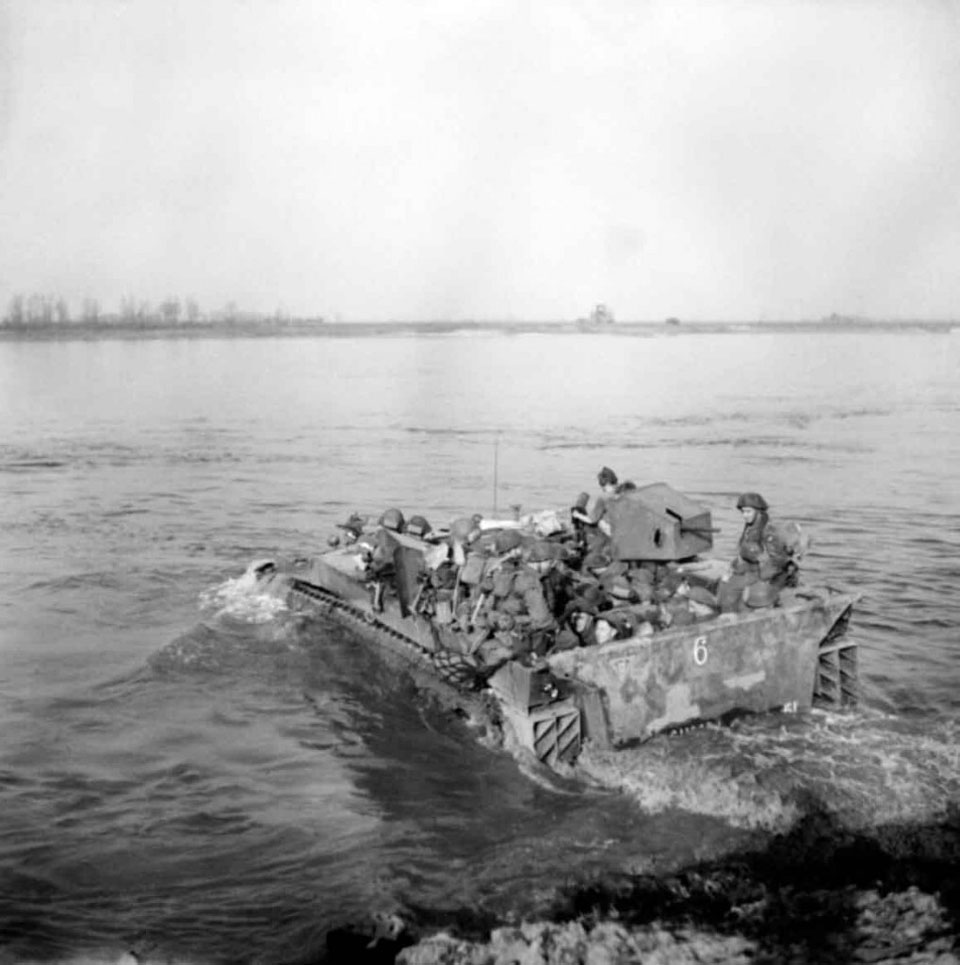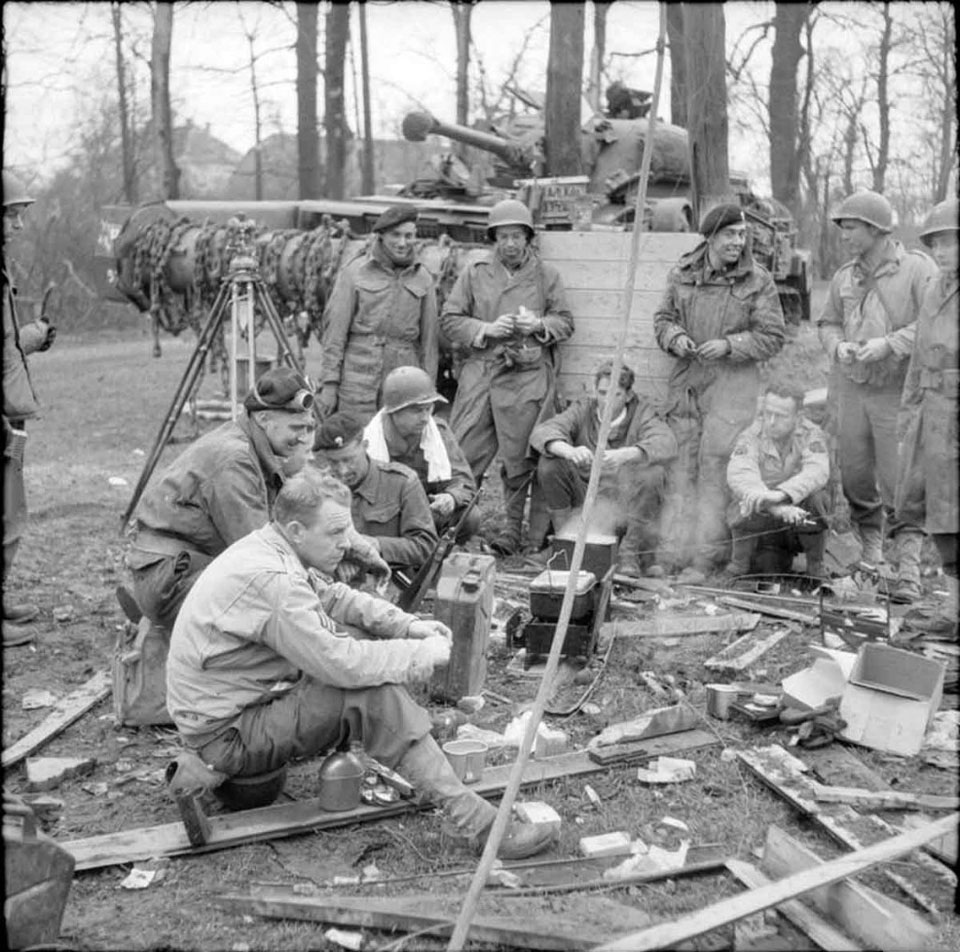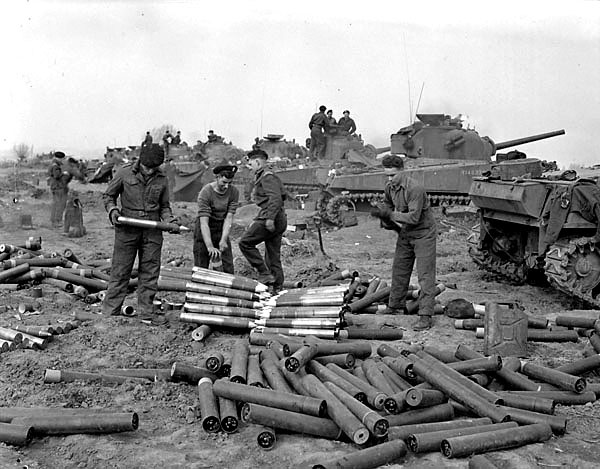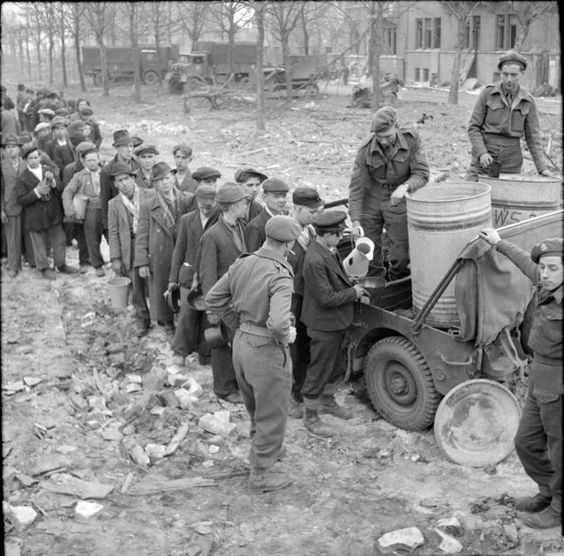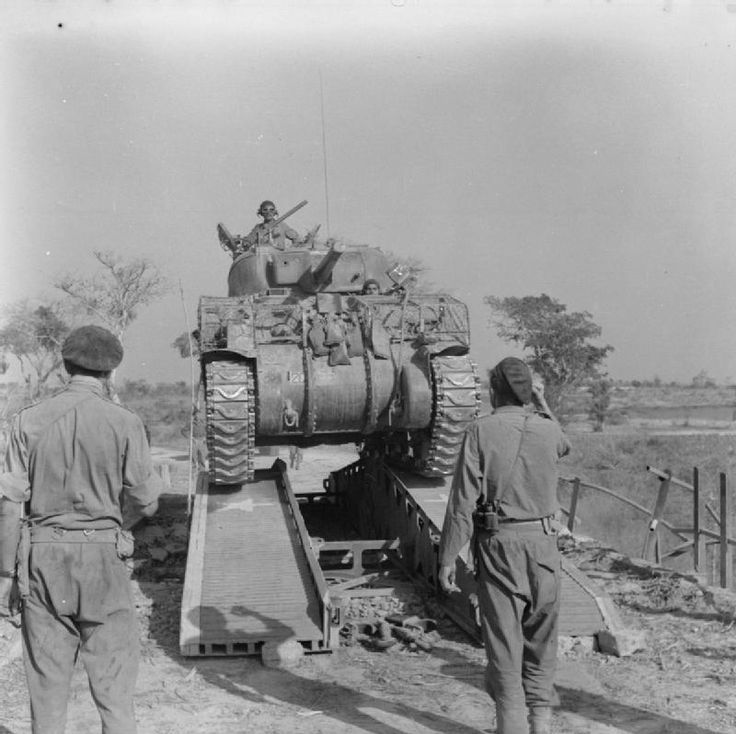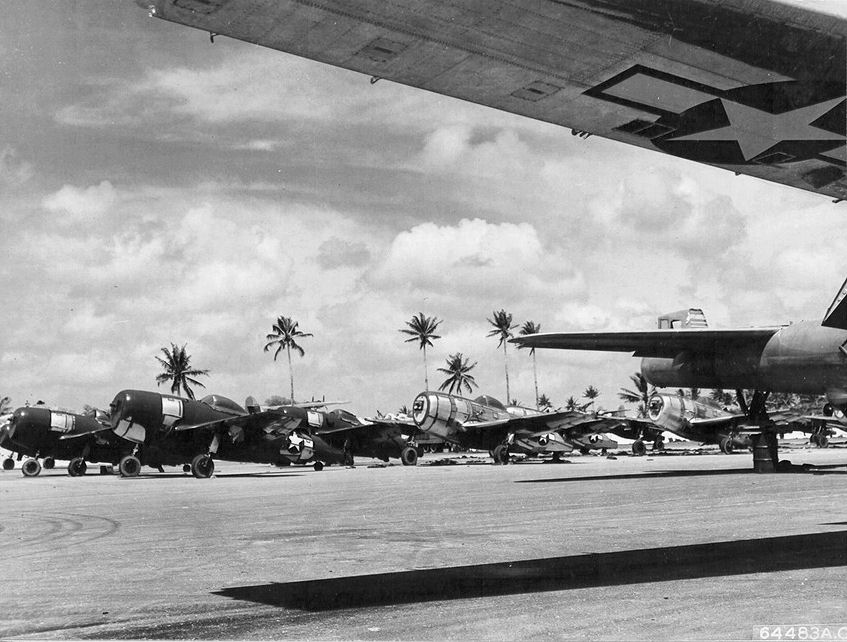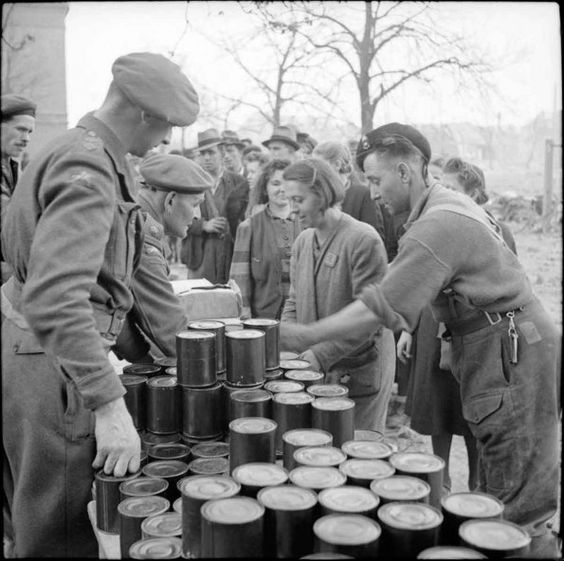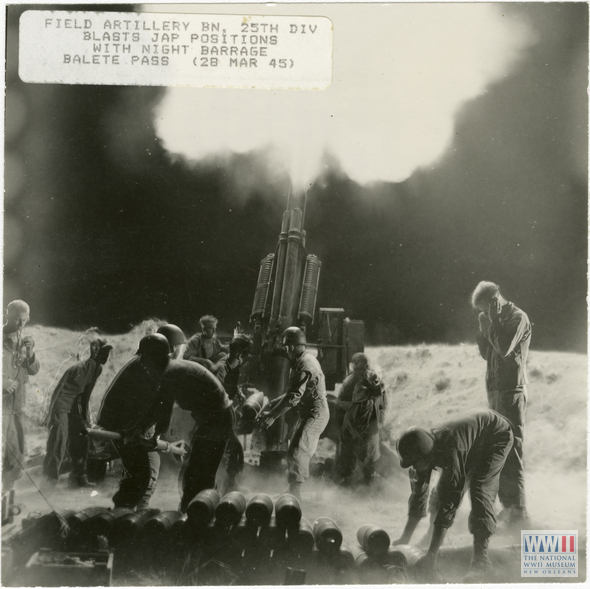Air Operations, CBI
BURMA- More than 30 10th Air Force fighter-bombers attack troops, pack elephants, supplies and targets of opportunity directly behind the Japanese Army battle line.
- 14 341st Medium Bomb Group B-25s operating in flights of 1 to 4 aircraft attack river traffic and targets of opportunity across southern and eastern China.
- 9 B-25s attack junks, stores and targets of opportunity at Lushan.
- 9 B-25s and 8 14th Air Force P-40s attack river traffic and targets of opportunity between Sienning and Yanglowtung.
- 7 B-25s attack Chingmen.
- 120 fighter-bombers attack Canton, Hankow, and the Kaitak and Wuchang airfields on Hong Kong and troops and road, rail and river traffic across southern and eastern China and northern French Indochina.
- During the night 10 40th Very Heavy Bomb Group B-29s sow mouth at the mouth of the Whangpoo River and in a channel of the Yangtze River at Shanghai.
- 6 308th Heavy Bomb Group B-24s attack port facilities at Hanoi and Haiphong and a barracks at Bakli Bay.
- V Bomber Command B-25s attack coastal targets, including a Japanese convoy near Ben Goi Bay from which 4 or 5 ships are sunk.
- 475th Fighter Group P-38s down 11 Japanese fighters over and around Ben Goi Bay between 1150 and 1220 hours.
- During the night 17 40th Very Heavy Bomb Group B-29s off Saigon and Camranh Bay.
- At 1100 hours, in response to a sighting by a night search plane, 1 63rd Heavy Bomb Squadron SB-24 attacks a large coastal convoy. 3 bombs dropped on a tanker are duds, but a second run on a cargo ship leaves the vessel in sinking condition. The B-24, already damaged by ships' fire, is attacked by 2 Ki-43 'Oscar' fighters during its withdrawal. 2 of the crew are killed and the hydraulic system is knocked out, but while the pilot wrestles to keep the B-24 in flight, a gunner downs 1 of the 'Oscars'. The B-24 crash lands at its base 7 hours later without additional casualties.
Air Operations, Europe
US 8th AIR FORCEGERMANY:
- 383 1st Air Division B-17s attack a munitions factory and an armaments factory in Berlin.
- 34 1st Air Division B-17s attack a tank factory at Hannover (primary).
- 431 3rd Air Division B-17s attack a marshalling yard at Hannover (secondary).
- 43 B-17s attack a secondary target and targets of opportunity.
GERMANY:
- 215 9th Air Division bombers attack two oil-storage depots and numerous targets of opportunity.
ITALY:
- During the night, XXII TAC A-20s and A-26s attack rail targets, road target, bridges, a factory, and river crossings.
Air Operations, Formosa
After being weathered out of the airfield at Okayama, 24 V Bomber Command B-24s attack Tainan.
[Air Operations, Japan
- Dispatched to attack a Japanese surface force reported to be en route to the Okinawa area, Fleet Carrier Air Group 10 strike aircraft armed with 11.75 inch aerial rockets attack several small vessels in Japanese waters. The results are inconclusive, and so the bulky, hard to handle experimental rockets are withdrawn from use by carrier aircraft.
- While searching for the Japanese surface battle force, VMF-112 F4Us down 1 E13A 'Jake' reconnaissance plane and 1 B5N 'Kate' torpedo bomber over Kagoshima Bay between 1615 and 1656 hours.
- Vf-17 and and Vf-82 F6Fs down 1 A6M2-N 'Rufe' fighter-bomber, 1 C6N 'Myrt' reconnaissance plane, a glider-towing G3M 'Nell' bomber, a utility plane, 1 A6M Zero and 1 Ki-45 'Nick' fighter off souther Kyushu between 1630 and 1645 hours.
- A VF-17 F6F downs an E13A 'Jake' reconnaissance plane near Kagoshima Bay at 1700 hours.
Air Operations, Malaya
During the night 32 40th Very Heavy Bomb Group B-29s sow mines off Singapore.
[Air Operations, Philippines
- XIII Bomber Command B-24s attack the Likanan airfield on Mindanao.
- B-24s and V Fighter Command fighter-bombers attack targets on Luzon.
- FEAF B-25s and A-20s attack Japanese Army ground troops at Baguio and Ilagan on Luzon.
- Various bombers attack the Cebu City area and airfields on Negros.
Air Operations, Ryukyus
- Task Force 58 carrier aircraft and Task Group 52.1 aircraft attack numerous pre-invasion targets on Okinawa. Task Group 52.1 aircraft also attack targets in the Sakishima Islands while Task Force 57 withdraws to refuel.
- A VC-84 FM downs a D3A 'Judy' dive bomber over the Yontan airfield on Okinawa at 0630 hours.
- A dawn kamikaze attack on the US bombardment force is weak and ineffectual, but an Okinawa-based warplane damages a large landing craft, and 10 snoopers are downed by US surface ships during the course of the night.
Battle of the Atlantic
Wreckage brought up from a contact attacked by the British destroyers Hesperus and Havelock assisted by Sunderland 'H' of 201 Squadron is conclusively identified as coming from U-246. The cause of the U-boat's demise is unknown but is attributed to an accident like snorkel failure or battery explosion.
| Class | Type VIIC |
| CO | Kapitänleutnant Ernst Raabe |
| Location | Irish Sea, St George's Channel |
| Cause | Unknown |
| Casualties | 48 |
| Survivors | None |
Burma
The Japanese have failed in their efforts to retake Meiktila and while they have been involved in this area XXXIII Corps has been making important gains to the north. Gen Hyotaro Kimura, commanding Japanese forces in Burma, decides that with his main communications cut, he must try to retreat as best he can. Many of the Japanese will manage to escape via Thazi to the east of Meiktila.
Soldiers of the Burma National Army revolt against the Japanese in central and southern Burma and join forces with the Allies. The BNA has, over recent months, been infiltrated by the Allied Special Operations Executive (SOE), which captialized on the low status afforded to the BNA by the Japanese Army.
[Eastern Front
Troops of the 2nd Belorussian Front capture Gdynia and the western part of Danzig. The 2nd Ukraine Front, continuing its advance to the west along the south bank of the Danube, takes Györ, reaches the Raba River, and breaches the German defense line on a front of 12 miles, captures Sarvar.
EAST PRUSSIAThe battle to hold the Heilegenbeil Pocket has cost the German 4th Army 93,000 killed, 47,000 wounded and 605 tanks, 3,600 pieces of artillery, 1,400 mortars and 130 aircraft destroyed.[MORE]
[![]()
![]() |
| ![]()
![]() ]
]
Germany, Command
After a blazing row with Hitler, Gen Heinz Guderian is dismissed from his post as Chief of the Army General Staff. His replacement if Gen Hans Krebs, a far less talented officer. Although Guderian has only been able to achieve a fraction of his aims against Hitler's opposition he has managed to preserve some sanity in the actions of the German High Command. He is the last of the famous German leaders from the early war period to be dismissed.
[Pacific
- The US minesweeper Skylark (AM-63) is sunk by a mine in the Okinawa area. Also in the Okinawa area, the US attack cargo ship Wyandot (AKA-92) is damaged by a Japanese bomber.
- Damaged in a collision in the Iwo Jima area is the US repair ship Agenor (ARL-3).
- The Japanese coast defense vessel No. 33 is sunk by US carrier-based aircrafte off Kyushu, Japan. Also off Kyushu, the US submarine Threadfin (SS-410) sinks the Japanese frigate Mikura (955t).
- US Army aircraft sink the Japanese minesweeper No. 11 and patrol boat No. 108 in the Netherlands East Indies area.
- Japanese auxiliary submarine chaser CHA-178 is sunk by mine off Shimonoseki and the cargo ship Tensei Maru sinks on a mine in Wakamatsu harbor.
Philippines
On Luzon in the US I Corps sector, the 27th Infantry makes good progress in the Mount Myoko sector. In the XI Corps sector, units of the 20th Infantry reach the summit of Mount Mataba, but Japanese resistance is still powerful. In the XIV Corps sector, the US 1st Cavalry Division reaches the outskirts of Lipa and San Agustin. American attacks on Mount Macolod are still unsuccessful.
In the 8th Army area the Americal Division's 182nd Infantry Regiment battles Japanese force north of Cebu City.
[Western Front
Gen Eisenhower modifies the plans and the direction of the final assault of his troops. The final objective is no longer Berlin, which the Russians are rapidly approaching from the east, but Leipzig. He sends a controversial signal to Stalin giving details of his order of battle and saying that he intends to send the main weight of his advance across southern Germany and Austria. The main thrust is to be toward Erfurt and Leipzig and a secondary effort is to go for Nüremberg, Regensburg and Linz. The British protest very strongly about this signal suggesting that decisions of such importance should not be taken by Eisenhower alone and that he is also overstepping his authority in communicating directly with the Soviets. The British would prefer the advance to be directed on Berlin as has been the plan up to now for the political value of this move. They believe that this plan is superior to one based on doubtful reports and worries of the preparation of a German National Redoubt in Bavaria. Both Churchill and the British Chiefs of Staff present this case to Washington. Pres Roosevelt has now become so weakened by his illness that most military decisions are left to Gen Marshall and the Joint Chiefs of Staff. Marshall has always been inclined to favor military rather than political reasoning in making strategic decisions and, therefore, confirms his support for Eisenhower. With the advantage of knowledge of future Soviet behavior, it is easy to comment that the war was fought for political and not military reasons, and that an advance to Berlin might have left the Western Allies in a stronger position in postwar Europe.
The British 2nd Army begins its advance toward the Elbe.
The 15th Army, composed of the XXII and XXIII Corps, is given a double mission: to control the besieged fortresses of Lorient and St Nazaire, on the west coast of France, and to occupy, garrison and administer the Rhineland in Germany. Meanwhile north of Idstein, on the Cologne-Frankfurt autobahn, the US 1st Army links up with the 3rd Army.
In the American 1st Army sector the VII, III and V Corps reach the Lahn River. Marburg is taken by US III Corps which has made a rapid advance from the Remagen bridgehead.
The 80th Div, XX Corps, US 3rd Army, attacks simultaneously across the Rhine and the Main, taking a firm bridgehead in the Mainz sector.
The 45th Div, XV Corps, US 7th Army, reaches the Main in the neighborhood of Obernau and succeeds in establishing a bridgehead across the river. Further south, the 44th Div advances along the Rhine and crosses the Neckar in the direction of Mannheim and Heidelberg.
At this point the general situation on the front is as follows: starting from the Emmerich area in the north, the Allies have formed a huge wedge reaching as far as Haltern, on the Lippe River, then turning back toward Essen, continues southward passing through Düsseldorf, Cologne and Bonn and then jutting out 60-odd miles to the east as far as Marburg, Giessen and Wiesbaden, before following the course of the Main for a short distance south of Frankfurt, to reach Lauterbach in the northeast, withdrawing again toward Aschaffenburg and Mannheim, finally following the course of the Rhine as far as Strasbourg. 3 German army groups are looking for some way of stemming the Allies advance: on the northern flank Gen Johannes Blaskowitz's Army Group H, with the 25th Army and 1st Parachute Army, in the center Gen Walther Model's Army Group B, formed of Gen Gustav-Adolf von Zangen's 15th Army and Gen Hasso von Manteuffel's 5th Panzer Army, and in the south Gen Paul Hausser's Army Group G, with Gen Hans Felber's 7th Army and Gen Hermann Förtsch's 1st Army.
Heinz Guderian, Chief of the General Staff of the Wehrmacht, is replaced by Gen Hans Krebs.
[Images from March 28, 1945
|
|
|
|
|
|
|
|
